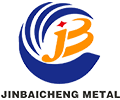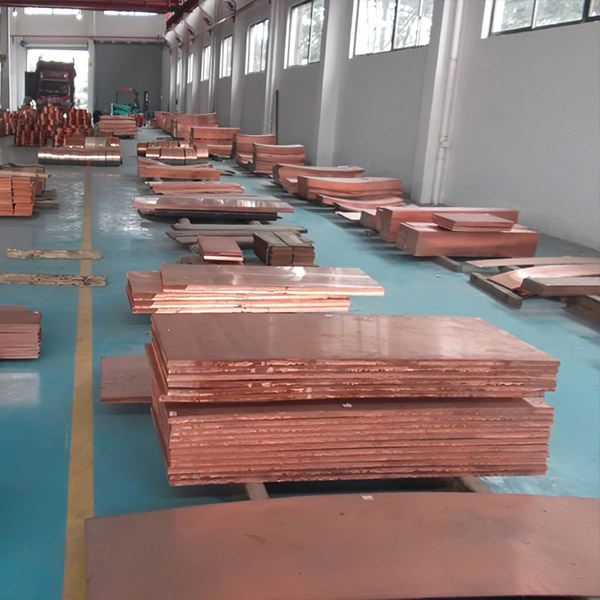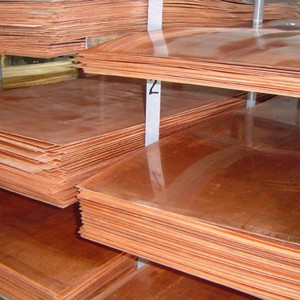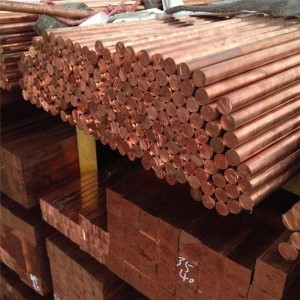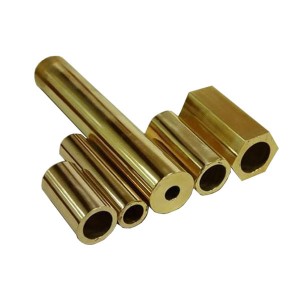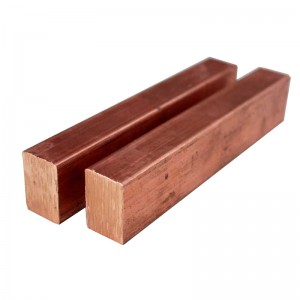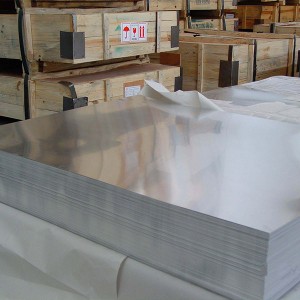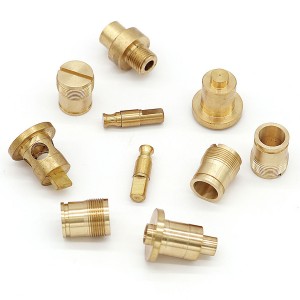Red Copper
Place of Origin: Shandong, China
Brand Name: Jinbaicheng
Model: red copper
Product name: pure copper
Hardness: 86
Density: 7.89
Proportion: 8.9
Other: -0.02%
Application: raw materials, electrical and thermal conductivity products, electronic products, molds
The specific gravity of red copper: 8.89g/(mm)
Cu ≥99.95%
Oxide: <0.003%
Conductivity: ≥57ms/m
Hardness: ≥85. 2HV
Density: 8.89g/(mm)
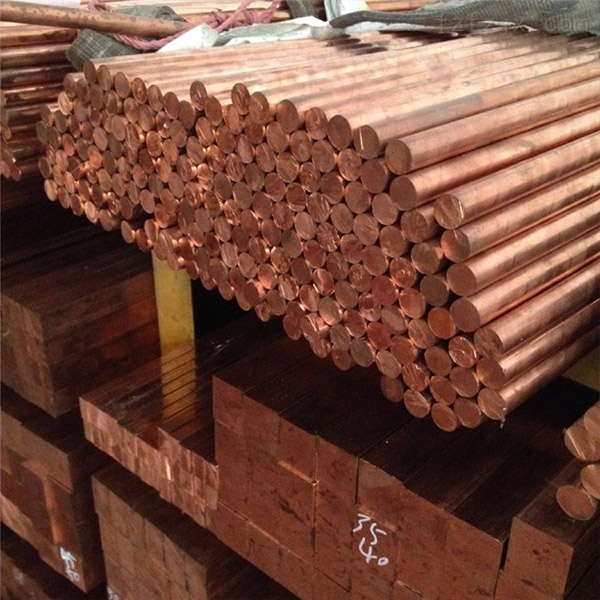
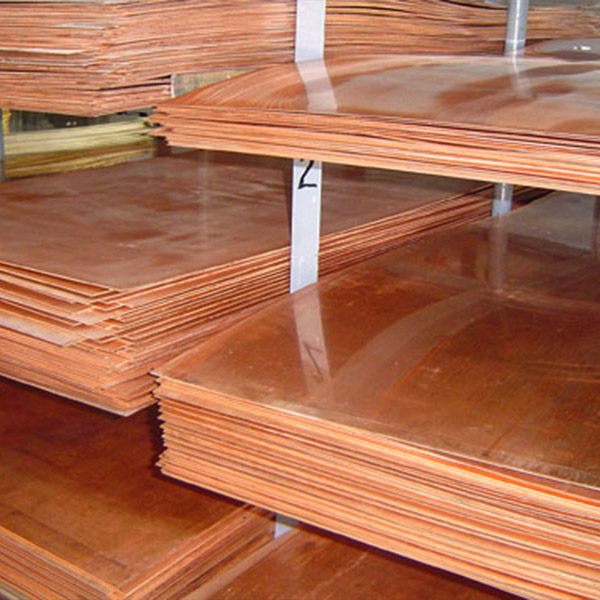
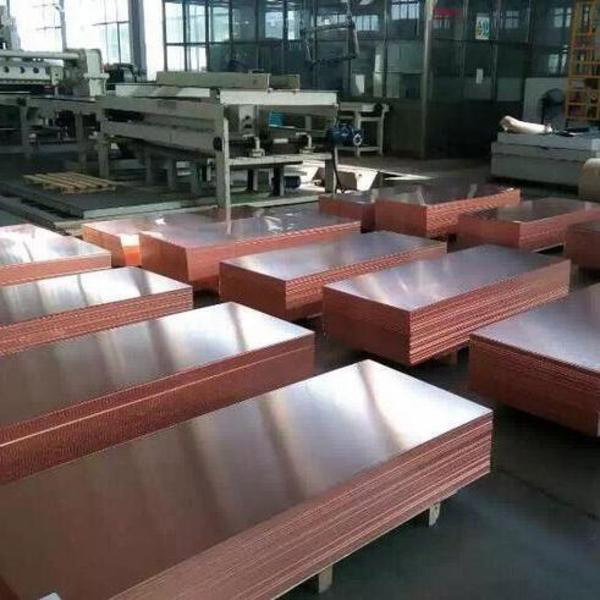
Red copper has good electrical conductivity and thermal conductivity, excellent plasticity, easy to hot and cold pressure processing, and is widely used in the manufacture of electrical wires, cables, electric brushes, electric spark copper and other products that require good electrical conductivity.
Commonly used copper alloys are divided into three categories: brass, bronze, and cupronickel. Pure copper is a purple-red metal, commonly known as "red copper", "red copper" or "red copper". Red copper or red copper is named for its purple-red color. It is not necessarily pure copper, and sometimes a small amount of deoxidizing elements or other elements are added to improve the material and performance.
Red copper is therefore also classified as a copper alloy. China's copper processing materials can be divided into: ordinary copper (T1, T2, T3, T4), oxygen-free copper (TU1, TU2 and high-purity, vacuum oxygen-free copper), deoxidized copper (TUP, TUMn), adding a small amount of alloy Four types of elemental special copper (arsenic copper, tellurium copper, silver copper). The electrical conductivity and thermal conductivity of copper is second only to silver, and it is widely used to make electrical and thermal equipment. Red copper has good corrosion resistance in the atmosphere, sea water, some non-oxidizing acids (hydrochloric acid, dilute sulfuric acid), alkali, salt solution and a variety of organic acids (acetic acid, citric acid)
Copper has a much wider range of uses than pure iron. Every year, 50% of copper is electrolytically purified into pure copper, which is used in the electrical industry. The red copper mentioned here really needs to be very pure, with a copper content of more than 99.95%. A very small amount of impurities, especially phosphorus, arsenic, aluminum, etc., will greatly reduce the conductivity of copper. Mainly used in electrical appliances, steam construction and chemical industries, especially terminal printed electrical circuit boards, copper strips for wire shielding, air cushions, busbar terminals; electromagnetic switches, pen holders, and roof boards. The mold manufacturing industry consumes large amounts of this, thus Lead to high prices.
It is used to make electrical equipment such as generators, bus bars, cables, switchgear, transformers, heat exchangers, pipelines, flat plate collectors of solar heating devices and other heat-conducting equipment. Oxygen in copper (a small amount of oxygen is easily mixed during copper smelting) has a great influence on conductivity, and copper used in the electrical industry must generally be oxygen-free copper. In addition, impurities such as lead, antimony, and bismuth will make the copper crystals unable to bond together, causing thermal embrittlement, and will also affect the processing of pure copper. This kind of pure copper with high purity is generally refined by electrolysis: impure copper (that is, blister copper) is used as the anode, pure copper is used as the cathode, and copper sulfate solution is used as the electrolyte. When the current is passed, the impure copper on the anode gradually melts, and the pure copper gradually precipitates on the cathode. The copper refined in this way has a purity of 99.99%.
It is also used in the production of motor short-circuit rings, electromagnetic heating inductors, and high-power electronic components, wiring terminals, and the like.
It has also been applied to furniture and decorations such as doors, windows, and armrests.
|
Name |
Chinese grades japanese grades german grades american grades british grades |
|
Zero oxygen free copper |
Tu0 c1011 c10100 c110 -- |
|
One oxygen-free copper |
Tu1 c1020 of-cu c10200 c103 |
|
No. 2 oxygen-free copper |
Tu2 c1020 of-cu c10200 c103 |
|
No. 1 copper |
T1 c1020 of-cu c10200 c103 |
|
No. 2 copper |
T2 c1100 se-cu c11000 c101 |
|
No. 3 copper |
T3 c1221 -- -- -- |
|
One phosphorus deoxidized copper |
Tp1 c1201 sw-cu c12000 -- |
|
No. 2 phosphorus deoxidized copper |
Tp2 c1220 sf-cu c12000 -- |
High purity, fine structure, extremely low oxygen content. No pores, trachoma, looseness, excellent electrical conductivity, high precision of the surface of the electro-eroded mold, after heat treatment, the electrode is non-directional, suitable for precision processing, and has good thermal conductivity, processability, ductility, and corrosion resistance Wait
